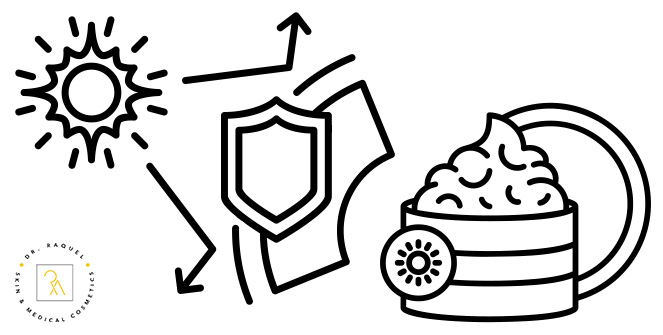Debunking SPF Myths: Higher Isn’t Always Better
Navigating the myriad of sunscreens available today can be daunting, especially with labels that can be quite perplexing. It’s tempting to reach for the highest SPF, assuming it’s the best choice. SPF 50 is higher than 30 or 40, so it must offer better protection, right? Not necessarily. If SPF is your sole consideration for sun and environmental protection, it’s time to broaden your perspective.
Understanding the Full Spectrum of Protection
The sun’s harmful effects on the skin—such as deterioration of skin health, premature ageing, and even skin cancer—are caused by a variety of rays, not just the burning UVB rays. Moreover, environmental damage includes exposure to the full spectrum of sunlight, including UVA, blue light, and infrared rays, as well as pollutants and free radicals.
What Does “SPF” Mean?
SPF stands for Sun Protection Factor, indicating how long you can stay in the sun without burning. For instance, if you have very fair skin that burns within a minute of sun exposure, applying SPF 10 allows you to stay in the sun for 10 minutes without burning. SPF 30 extends this to 30 minutes, and so forth. However, the difference between SPF levels is quite minimal: SPF 30 blocks 96.7% of UVB radiation, SPF 40 blocks 97.5%, and SPF 50 blocks 98%.
The Role of UVA Rays
While UVB rays can damage skin health, they are blocked by clouds and are only present on very sunny days, comprising 5% of the UV rays that reach the Earth’s surface. In contrast, UVA rays are present all year round, penetrating clouds and glass. These longer light waves can reach deep skin layers, degrading collagen and elastin, leading to lines, wrinkles, and discolouration. Importantly, SPF does not measure protection against UVA rays, so solely relying on SPF is insufficient.
Environmental Protection
Sunscreens use two main types of filters: chemical and physical. At our clinic, we prefer physical sunscreens, particularly those containing zinc oxide and titanium dioxide, as they protect against both long UVA and short UVB rays. These minerals primarily sit on the skin’s surface, reflecting light away and providing stable protection throughout the day. However, reapplication is necessary after sweating or rubbing the skin. You can find some tips on reapplying sunscreen in our blog post “The Sun And Your Skin: Skin Cancer And Ageing”
The sunscreens we suggest at the clinic (from brands such as AlumierMD, ZO and Skinbetter Science) provide daily high-performance protection, incorporating antioxidants, vitamin C, and hydrating agents like sodium hyaluronate and hyaluronic acid to offer comprehensive skin defence.
User-Friendly Formulated Sunscreens
Sunscreens that users want to wear involves balancing several factors: photostability, application frequency, and the protection spectrum. Zinc oxide and titanium dioxide excel in all these areas and are the only two sunscreen filters generally recognised as safe and effective (GRAS) by the FDA.
However, these minerals are thick and white, posing a challenge for chemists to formulate a high SPF product that feels pleasant on the skin without using chemical filters. While high SPFs often combine physical and chemical filters, our recommended ones have achieved SPF 40 or 42 without leaving a white cast or adding chemicals. These sunscreens are lightweight and comfortable, with 90% of users reporting more hydrated skin.
Upcoming changes in SPF Labelling
The European Commission recently decided to only recognise SPF 30 or SPF 50, discontinuing intermediate SPFs. Therefore, for brands like AlumierMD, their SPF 40 and 42 sunscreens will be labelled as SPF 30 in Europe, although their protection levels remain unchanged. In North America, they will continue to be labelled as SPF 40 and SPF 42.
They chose not to upgrade to SPF 50 because it offers only 0.5% more protection and would require chemical filters, compromising user comfort. SPF alone does not cover the full spectrum of environmental protection needed for long-term skin health.
Making the Right Choice
When choosing between a basic high SPF formula and a robust hybrid sunscreen that protects against UVB, UVA, pollution, free radicals, infrared, and blue light—while also hydrating and serving as a foundation or tinted moisturiser—we have worked hard to be able to help you find the perfect sunscreen tailored to your individual skin needs.
Click here to book your consultation at Skin and Medical Cosmetics today. Contact us on 01732 525875 or drop us an email at [email protected].

